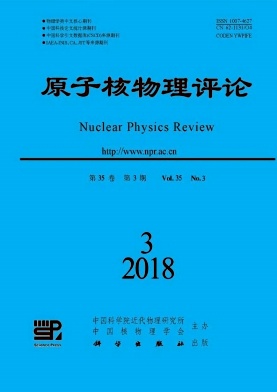|
[1]
|
STEWART M E, ANDERTON C R, THOMPSON L B, et al. Chemical Reviews, 2008, 108(2):494. |
|
[2]
|
TSUJI J. Palladium Reagents and Catalysts:New Perspectives for the 21st Century[M]. Hoboken:John Wiley & Sons, 2006. |
|
[3]
|
FLANAGAN T B, OATES W A. Annual Review of Materials Science, 1991, 21(1):269. |
|
[4]
|
HÜBERT T, BOON B L, BLACK G, et al. Sensors and Actuators B:Chemical, 2011, 157(2):329. |
|
[5]
|
ZORIC I, LARSSON E M, KASEMO B, et al. Advanced Materials, 2010, 22(41):4628. |
|
[6]
|
LIU N, TANG M L, HENTSCHEL M, et al. Nature Materials, 2011, 10(8):631. |
|
[7]
|
KREIBIG U, VOLLMER M. Theoretical Considerations[M]. Berlin:Springer, Heidelberg, 1995:13. |
|
[8]
|
GU F, ZENG H, ZHU Y B, et al. Advanced Optical Materials, 2014, 2(2):189. |
|
[9]
|
DUAN J L, CORNELIUS T W, LIU J, et al. Journal of Physical Chemistry C, 2009, 113(31):13583. |
|
[10]
|
TASALTIN N, ÖZTÜRK S, KILINC N, et al. Nanoscale Research Letters, 2010, 5(7):1137. |
|
[11]
|
CHENG F, WANG H, SUN Z, et al. Electrochemistry Communications, 2008, 10(5):798. |
|
[12]
|
XU C W, WANG H, SHEN P K, et al. Advanced Materials, 2007, 19(23):4256. |
|
[13]
|
KARTOPU G, HABOUTI S, ES-SOUNI M. Materials Chemistry and Physics, 2008, 107(2-3):226. |
|
[14]
|
WANG H, XU C, CHENG F, et al. Electrochemistry Communications, 2007, 9(5):1212. |
|
[15]
|
CHEREVKO S, FU J, KULYK N, et al. Journal of Nanoscience and Nanotechnology, 2009, 9(5):3154. |
|
[16]
|
KIM K, KIM M, CHO S M. Materials Chemistry and Physics, 2006, 96(2-3):278. |
|
[17]
|
KOENIGSMANN C, SANTULLI A C, SUTTER E, et al. ACS Nano, 2011, 5(9):7471. |
|
[18]
|
ZHANG L, GUO S, DONG S, et al. Analytical Chemistry, 2012, 84(8):3568. |
|
[19]
|
MENKE E J, THOMPSON M A, XIANG C, et al. Nature Materials, 2006, 5(11):914. |
|
[20]
|
INGUANTA R, PIAZZA S, SUNSERI C. Electrochemistry Communications, 2009, 11(7):1385. |
|
[21]
|
KANG H, JUN Y, PARK J I, et al. Chemistry of Materials, 2000, 12(12):3530. |
|
[22]
|
SHI Z, WU S, SZPUNAR J A. Nanotechnology, 2006, 17(9):2161. |
|
[23]
|
DUAN J, LYU S, YAO H, et al. Nanoscale Research Letters, 2015, 10(1):481. |
|
[24]
|
STEWART M E, ANDERTON C R, THOMPSON L B, et al. Chemical Reviews, 2008, 108(2):494. |
|
[25]
|
TSUJI J. Palladium Reagents and Catalysts:New Perspectives for the 21st Century[M]. Hoboken:John Wiley & Sons, 2006. |
|
[26]
|
FLANAGAN T B, OATES W A. Annual Review of Materials Science, 1991, 21(1):269. |
|
[27]
|
VAN Der Zande, BIANCA M I, FOKKINK L G, et al. Langmuir, 2000, 16(2):451. |
|
[28]
|
ATAY T, SONG J H, NURMIKKO A V. Nano Letters, 2004, 4(9):1627. |
|
[29]
|
WEI Q H, SU K H, DURANT S, et al. Nano Letters, 2004, 4(6):1067. |
|
[30]
|
KOTTMANN J P, MARTIN O J F. Optics Express, 2001, 8(12):655. |
|
[31]
|
SU K H, WEI Q H, ZHANG X, et al. Nano Letters, 2003, 3(8):1087. |
|
[32]
|
JAIN P K, HUANG W, EL-SAYED M A. Nano Letters, 2007, 7(7):2080. |
|
[33]
|
JAIN P K, EL-SAYED M A. Nano Letters, 2007, 7(9):2854. |






 甘公网安备 62010202000723号
甘公网安备 62010202000723号 DownLoad:
DownLoad: